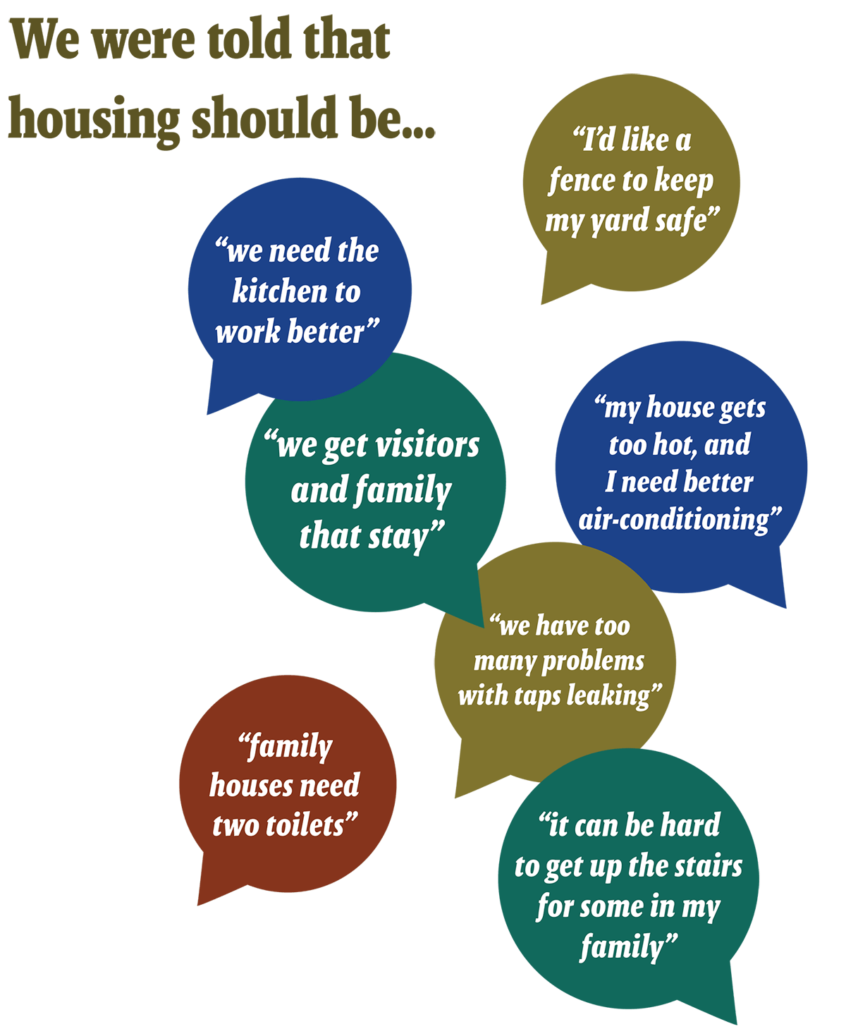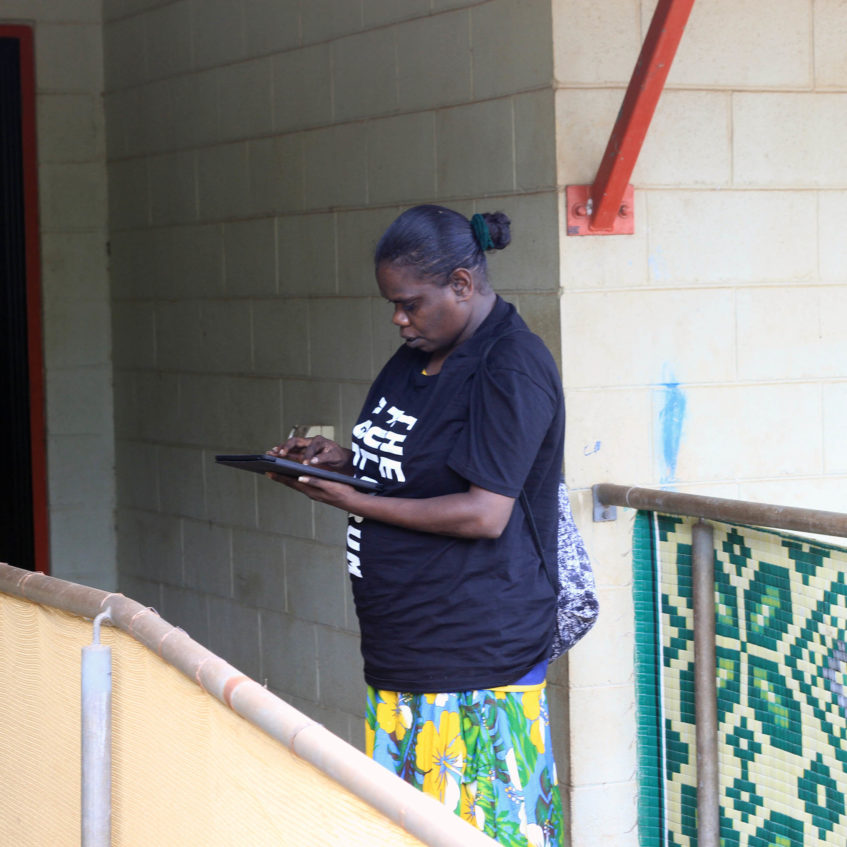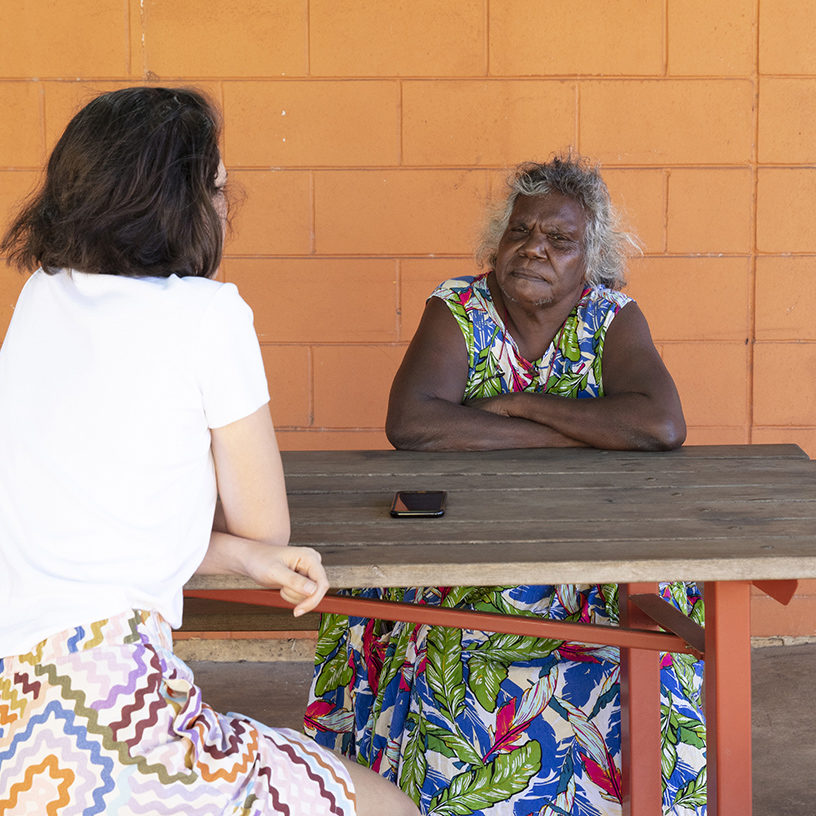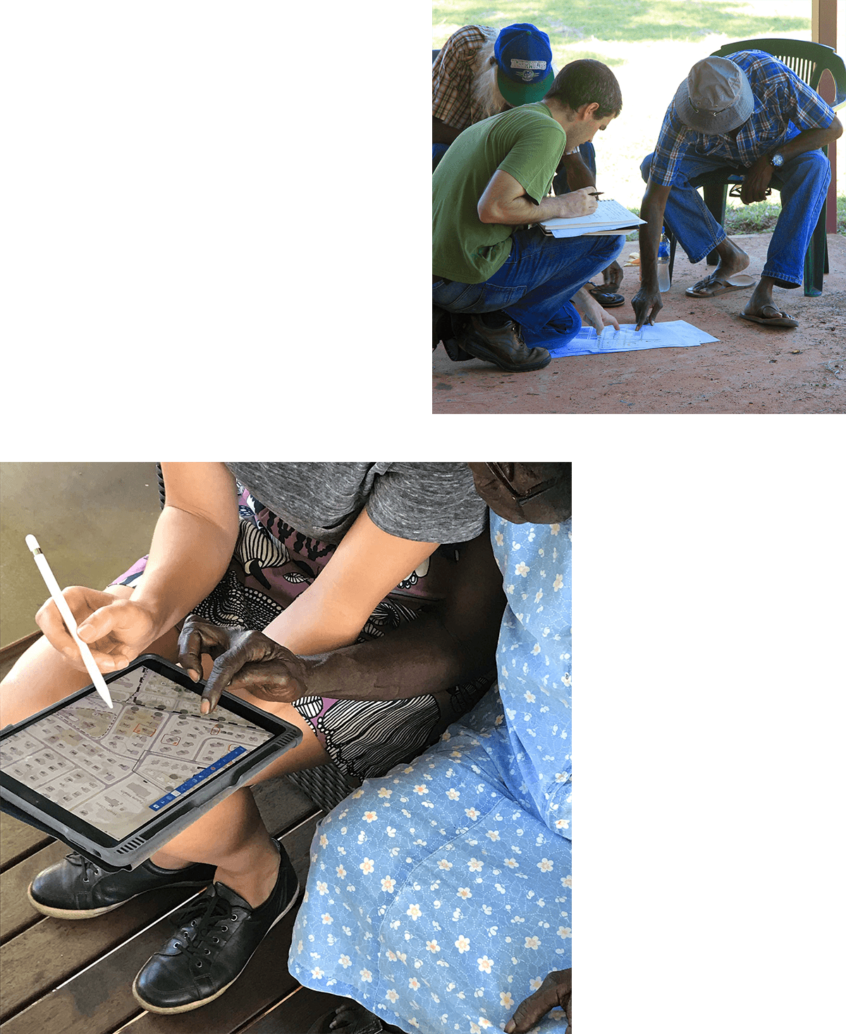
Groote Community Planning
What was the issue?
Improving quality of life and liveability are the key objectives for the Anindilyakwa Land Council and local agencies working on the Groote Archipelago.
With this in mind, TF.A were engaged to develop a Master Plan that would ensure the long-term sustainability of community life on the Archipelago. Our job was to identify residential and community growth locations, and to propose a strategy for the staging of any development over the short to medium term.
What did we do?
The resulting ‘Master Plan’ is based on extensive baseline research, site visits and ongoing direct consultation with the Anindilyakwa people through surveys, interviews and conversations. The plan was delivered at a measured pace and, in several stages, in order to build the community’s knowledge around infrastructure, design and delivery.
We used a variety of approaches to gain insight into housing needs and to enhance community support:
Householder Surveys
We conducted nine surveys to determine issues around occupation density, health hardware and the impact of high levels of mobility on household stress. The surveys were conducted in two ways:
We employed and trained local community members to undertake community wide surveys using iPad’s ‘in Language’.
Our own staff also conducted house-by-house audits throughout the community over a number of years.
Survey coverage was extensive, ranging from 60 to 90% of households in each survey.
Participatory Planning
The Area Plans for Umbakumba, Angurugu and Milyakburra were developed to reflect community aspirations. Subdivision and housing responses were developed through Participatory Planning rather than a Business as Usual (BAU) approach for lot layout and settlement planning. The result was a well-integrated response, that reflect the desire of local residents and met the technical and economic intent of the planning process.
Community Reference Group Workshops
Local Housing Reference Groups were established to build the skills and experience of the community. Iterative design workshops were held using a variety of tools, including models, photographs, layout plans, site walking tours and precedent presentations from technical experts.
As their knowledge grew, community members were able to proactively provide inputs and feedback into the projects that impacted them.
“It’s important for Indigenous people that we have our own housing committees, chairs and directors. Strong leaders, strong voices." – Elaine Mamarika, Director Anindilyakwa Housing Aboriginal Corporation
What was our impact?
Accountability
This project brought about the establishment of the Groote Infrastructure Working Group – a collaboration between the ALC, AHAC and various NTG Agencies to maintain community involvement, ensure alignment to community design aspirations and provide regular technical updates to the community via reference group members.
Community-Led Design
Through the formation of Community Reference Groups, community knowledge and understanding of issues around infrastructure was significantly enhanced. You cannot have community-led decision making without first creating informed decision-makers. For the first time, locals had the capacity and forum to contribute to the infrastructure issues that impact them in the future.



